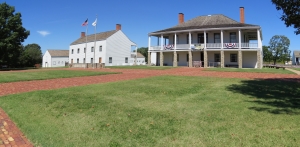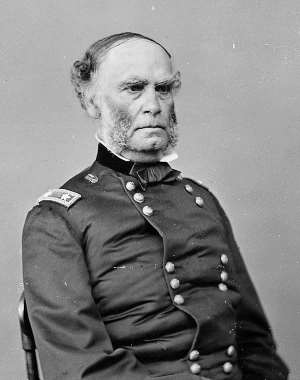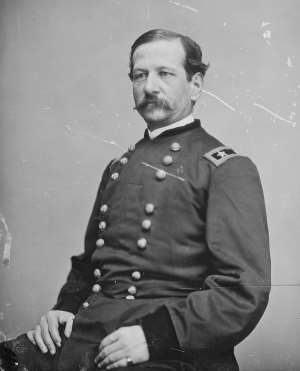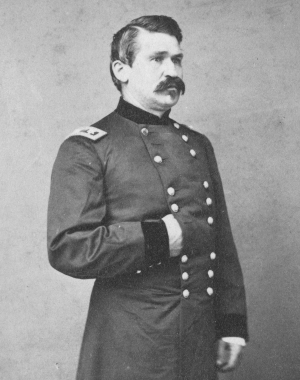From the previous stop, back track to US Highway 69 and head south. When you reach Fort Scott, take the exit for US Highway 54 and turn right, following the signs to Fort Scott National Historic Site.
Fort Scott National Historic Site

According the their website, the Fort Scott National Historic Site "preserves 20 historic structures, eleven of which are original buildings, the others are reconstructions built on the original foundations."
Fort Scott (named after General Winfield Scott) was established in 1842 as one of a chain of forts to help manage relations between settlers and Native Americans. The fort was used as a military installation protecting the Kansas-Missouri border during the American Civil War.
Following the Battle of Westport on October 23, Maj. Gen. Samuel Curtis ordered Col. Thomas Moonlight (about 1,050 men and five howitzers) south with the Second Cavalry Brigade to stay on the Confederate right flank and reinforce the garrison at Fort Scott. Skirmishing with a small Confederate force in Mound City in the early morning on October 25, Moonlight reached Fort Scott around noon. The small garrison there was much relieved at Moonlight’s arrival.
An interesting series of events occurred as the Federals continued down the Military Road toward Fort Scott. Following their defeat at Mine Creek, Maj. Gen. Sterling Price cancelled his plans to attack Fort Scott and capture the military stores and supplies there. Price decided to leave the Military Road, turn southeast and continue his retreat into Missouri.
Now the Federals leading the pursuit were the brigades of Lt. Col. Frederick W. Benteen and Brig. Gen. John McNeil. As Price turned southeast, so did Benteen and McNeil. Maj. Gen. Alfred Pleasonton with the brigades of Brig. Gen. John B. Sanborn and Col. John F. Philips was next in line, but Pleasonton took these men south and headed into Fort Scott. Pleasonton’s health was deteriorating, and he knew his men and horses were exhausted. So he decided on his own to take his forces into Fort Scott and did not consult with Curtis.
Behind Pleasonton was the cavalry division of Maj. Gen. James G. Blunt. Blunt was in a bit of a funk because he had missed out on the fighting so far. As the troops to his front continued toward Fort Scott, Blunt assumed that’s where he should go and followed them.
General Curtis was angry when he observed most of his forces heading for Fort Scott and away from the retreating Confederates. So he followed after them to find out why. Meanwhile, Benteen and McNeil were fighting Shelby down at Charlot’s Farm.
Maj. Gen. Samuel R. Curtis

Maj. Gen. Alfred Pleasonton

Maj. Gen. James G. Blunt

While you’re in Fort Scott, Kansas, it’s just a couple of miles down to Fort Scott National Cemetery where there are a couple of items of note, although not related to Price's Retreat from Westport.